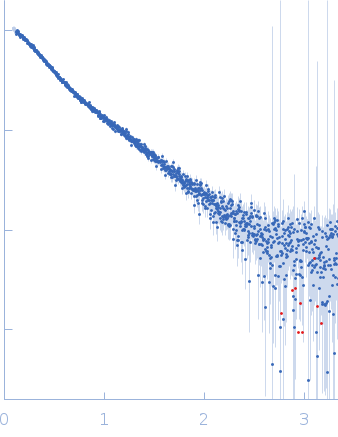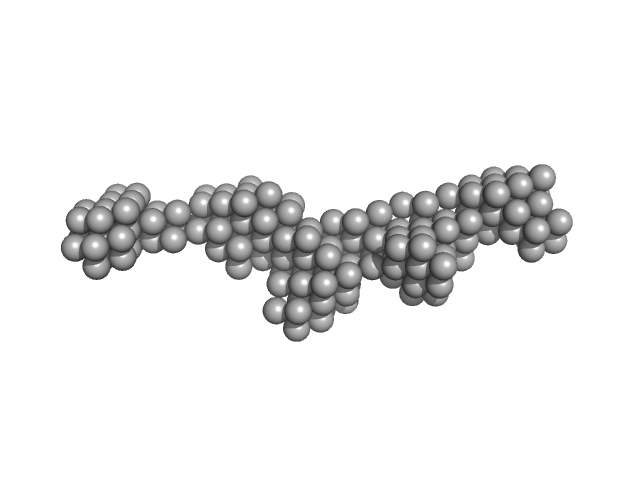| MWI(0) | 52 | kDa |
| MWexpected | 46 | kDa |
| VPorod | 52 | nm3 |
|
log I(s)
5.80×10-2
5.80×10-3
5.80×10-4
5.80×10-5
|
 s, nm-1
s, nm-1
|
|
|
|

|
|

|
|
Synchrotron SAXS
data from solutions of
Plasmodium falciparum Membrane Occupation and Recognition Nexus (MORN1) repeats 7-15
in
20 mM Tris-HCl, 100 mM NaCl, pH 7.5
were collected
on the
EMBL P12 beam line
at the PETRA III storage ring
(DESY; Hamburg, Germany)
using a Pilatus 2M detector
at a sample-detector distance of 3 m and
at a wavelength of λ = 0.12 nm
(I(s) vs s, where s = 4πsinθ/λ, and 2θ is the scattering angle).
One solute concentration of 1.00 mg/ml was measured
at 10°C.
20 successive
0.050 second frames were collected.
The data were normalized to the intensity of the transmitted beam and radially averaged; the scattering of the solvent-blank was subtracted.
|
|
|||||||||||||||||||||||||||